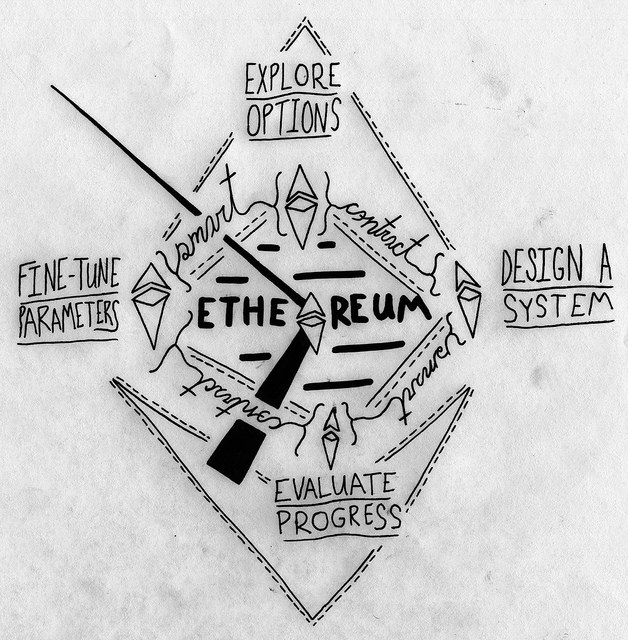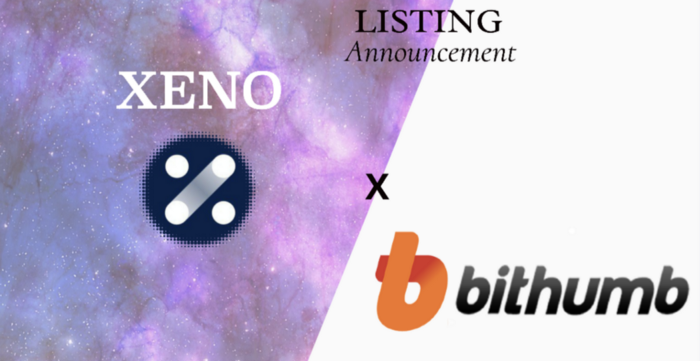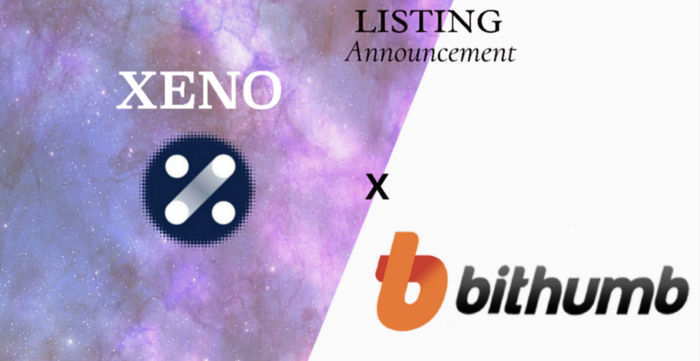Blogs
Loom Network (LOOM): The Next Ethereum?

The cryptocurrency market has been the subject of focus of the investing community worldwide over the past few years. Indeed, the hype for cryptocurrencies is at their peak at the moment, with the overall crypto-market recovering from a drastic slump experienced at the beginning of the year. Even after all the publicity and the hype, the majority investors still do not fully understand the blockchain concept, with their main focus on the top 3 coins, namely Bitcoin, Ethereum, and Ripple. However, 2017 saw the emergence of many such projects that aim to address all the issues of the aforementioned three. One such project is the Loom Network.
About the Loom Network:
Among all the specific use cases that blockchain projects have, Loom Network focuses on providing a next-generation blockchain platform for large-scale online gaming as well as social interaction. The Loom Network team also provides a “coding school” where developers can make their own games based on the famed “smart contract” technology. The project is still in its infancy with no large gaming project or development house having yet approached it. As of 17/4/2018, Loom Network is ranked 125th with a combined market cap of $94,034,086 USD and valued at $0.192282 USD.
The Loom Network technology is based on the Ethereum blockchain but meant for large-scale online games and social DApps, something that the Ethereum network has experienced problems with in the past. Thus, it is built on an Ethereum Side chain offering trust and security, along with the computing resources necessary for operating commercial-scale services. It is one of the very few projects which did not have a whitepaper when it originally started and is already backed up by several projects, one of which being “CryptoZombies”.
Loom network’s Recent Developments:
The Loom Network’s Developers have recently released an update explaining the development of Plasma Support for Loom DApp Chains. As explained by them, DApp’s require trust assumptions to be made in order to effectively reach their target scalability. They thus decided to introduce Plasma technology, and more specifically, Plasma Cash to address these scalability issues. Indeed, analysts firmly believe that Plasma’s utility will help companies that need automated plasma security for their respective private or public chains.
How Does Plasma Technology Work?
Contrary to existing sidechains, Plasma Cash allows developers to transfer assets onto side chains securely. This is achieved by associating the asset deposited by a user onto a sidechain with a specific serial number. The asset, which can be a token, is non-fungible and thus has its own transaction history. This results in zero-confirmation transactions. Because of plasma technology, the efficiency of a side-chain is greatly increased, which is great for exchanges and games in the crypto-space. It also adds an extra layer of security, as users can reclaim their funds on the Mainchain through “plasma exits” in case of a data breach.
What Plasma Technology can bring to Loom Network’s DAppChains:
As mentioned before, DAppChains were secured through DPos, which is not fully decentralized and requires the users to put some level of trust in the witnesses who are running the network. Implementing Plasma Cash technology will result in better security in this regard, as it will allow more critical operations to run the chain without high trust level requirements. Users thus no longer have to trust any sidechains as they are secured by Plasma Cash constructs.
With the addition of Plasma Cash, DAppChains can now report “Merkle proofs” which act as checkpoints directly to the Ethereum Mainnnet. Loom Network’s variant will use a slightly different implementation of the existing Plasma MVP to better suit the online gaming environment. The plasma implementation news was received with positivity within the community, with many crediting the Loom Network to be the future of DApp development.
Final thoughts:
With an over-abundance of blockchain related projects littering the crypto-space, it is getting increasingly crucial for investors to take a closer look at an upcoming project that seems viable. The fruition of the Loom Network would mean a victory not only for the crypto-space in general but also for the implementation of blockchain technology which is poised to take over the world in the recent future. Indeed, the future prospects for the Loom Network are pretty high, with many believing that it can oust Ethereum from its position.
We will be updating our subscribers as soon as we know more. For the latest on LOOM, sign up for our Telegram!
Disclaimer: This article should not be taken as, and is not intended to provide, investment advice. Global Coin Report and/or its affiliates, employees, writers, and subcontractors are cryptocurrency investors and from time to time may or may not have holdings in some of the coins or tokens they cover. Please conduct your own thorough research before investing in any cryptocurrency and read our full disclaimer.
Image courtesy of Daniel Friedman via Flickr
Altcoins
XNO Token of Xeno NFT Hub listed on Bithumb Korea Exchange


Hong Kong, Hong Kong, 25th January, 2021, // ChainWire //
Xeno Holdings Limited (xno.live ), a blockchain solutions company based in Hong Kong, has announced the listing of its ecosystem utility token XNO on the ‘Bithumb Korea’ cryptocurrency exchange on January 21st 2021.
Xeno NFT Hub (market.xno.live ), developed by Xeno Holdings, enables easy minting of digital items into NFTs while also providing a marketplace where anyone can securely trade NFTs.
The Xeno NFT Hub project team includes former members of the technology project Yosemite X based in San Francisco and professionals such as Gabby Dizon who is a games industry expert and NFT space influencer based in Southeast Asia.
NFT(Non-Fungible Token) technology has recently gained huge focus in the blockchain arena and beyond, making waves in the online gaming sector, the art world, and the digital copyrights industry in recent years. The strongest feature of NFTs is that “NFTs are unique digital assets that cannot be replaced or forged”. Unlike fungible tokens such as Bitcoin or Ether, NFTs are not interchangeable for other tokens of the same type but instead each NFT has a unique value and specific information that cannot be replaced. This fact makes NFTs the perfect solution to record and prove ownership of digital and real-world items like works of art, game items, limited-edition collectibles, and more. One of the ways to have a successful…
Altcoins
Should Crypto Projects Devote Resources to Community Growth and Marketing?

2020 has been an incredible year for crypto as investors have generated windfall profits and crypto projects have seen their businesses gain the spotlight they’ve been looking for. While Bitcoin has received most of the attention after major institutional investors announced they were accumulating the increasingly scarce asset, many altcoins have also seen their fair share of glory. When looking at all the big winners of the past year, the first project that probably comes to mind is Chainlink, having appreciated by more than 550% YTD and now valued at over $4.5 billion. But, the actual biggest winner of the year is HEX with a YTD return of over 5,000%.
I mention both of the above projects as they have each taken slightly different paths to achieve greatness. Chainlink has devoted resources toward building a fundamentally sound business with many strategic partnerships while HEX has spent vast sums of money on marketing and promotion. Both approaches are valid, but one thing is certain, it is absolutely imperative for crypto projects to let the crypto community know what makes them special. Of course, one of the reasons that makes crypto so valuable is the powerful blockchain technology that most projects are utilizing.
Cryptocurrency vs. Blockchain Technology
It’s important to make a distinction between blockchain technology and cryptocurrency. Although they are often used interchangeably, they are different. Blockchain technology and crypto were both created after the 2008 financial crisis, but cryptocurrency…
Altcoins
XENO starts VIP NFT trading service and collaborates with contemporary artist Hiro Yamagata


Hong Kong, Hong Kong, 24th December, 2020, // ChainWire //
The XENO NFT Hub (https://xno.live) will provide a crypto-powered digital items and collectables trading platform allowing users to create, buy, and sell NFTs. Additionally it will support auction based listings, governance and voting mechanisms, trade history tracking, user rating and other advanced features.
As a first step towards its fully comprehensive service, XENO NFT Hub launched a recent VIP service to select users and early adopters in December 2020 with plans for a full Public Beta to open in June 2021.
“NFTs are extremely flexible in their usage, from digital event tickets to artwork, and while NFTs have a very wide spectrum of uses and categories XENO will initially focus its partnership efforts and its own item curation on three primary areas: gaming, sports & entertainment, and collectibles.”, said XENO NFT Hub president Anthony Di Franco.
He also added “This does not mean we will prohibit other types of NFTs from our ecosystem However, it simply means that XENO’s efforts as a company will be targeted into these verticals initially as a cohesive business approach.”
Development and Procurement Lead, Gabby Dizon explained, “Despite our initial focus, we found ourselves with a unique opportunity to host some of the works of Mr. Hiro Yamagata. We are collaborating with Japanese artist Hiro Yamagata to enshrine some of his artwork into NFTs.”
Mr. Yamagata has…
-

 Blogs6 years ago
Blogs6 years agoBitcoin Cash (BCH) and Ripple (XRP) Headed to Expansion with Revolut
-

 Blogs6 years ago
Blogs6 years agoAnother Bank Joins Ripple! The first ever bank in Oman to be a part of RippleNet
-

 Blogs6 years ago
Blogs6 years agoStandard Chartered Plans on Extending the Use of Ripple (XRP) Network
-

 Blogs6 years ago
Blogs6 years agoElectroneum (ETN) New Mining App Set For Mass Adoption
-

 Don't Miss6 years ago
Don't Miss6 years agoRipple’s five new partnerships are mouthwatering
-

 Blogs6 years ago
Blogs6 years agoCryptocurrency is paving new avenues for content creators to explore
-

 Blogs6 years ago
Blogs6 years agoEthereum Classic (ETC) Is Aiming To Align With Ethereum (ETH)
-

 Blogs6 years ago
Blogs6 years agoLitecoin (LTC) Becomes Compatible with Blocknet while Getting Listed on Gemini Exchange















